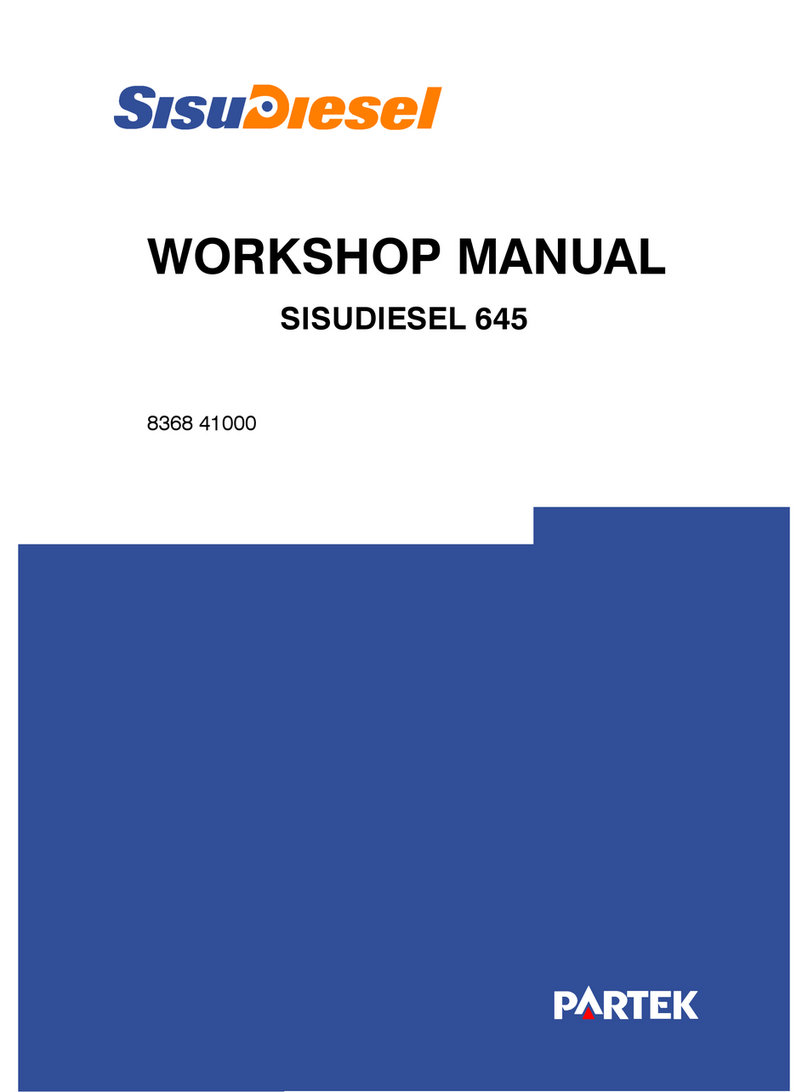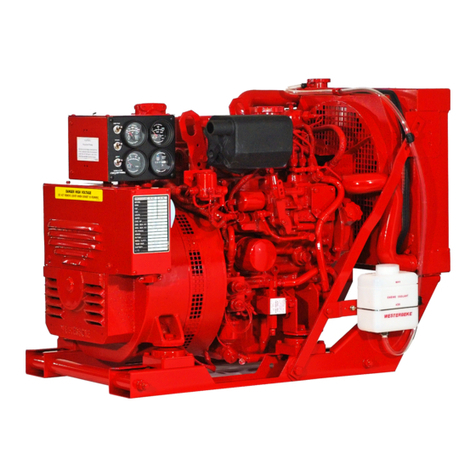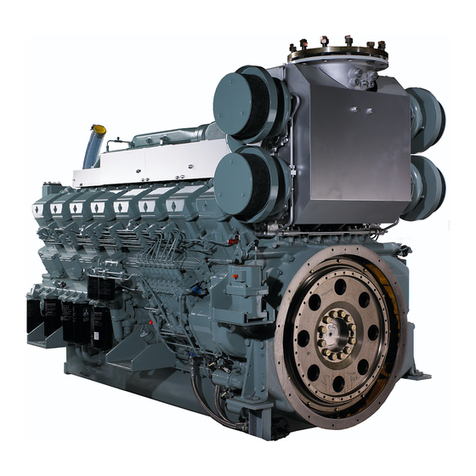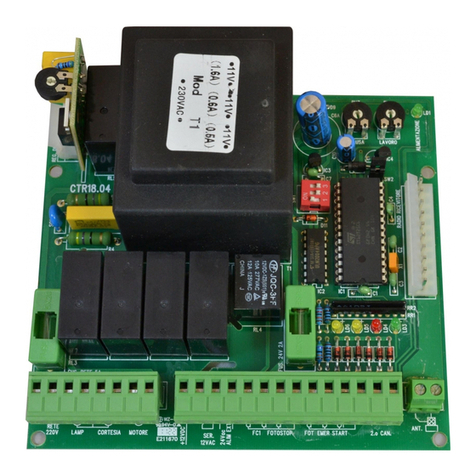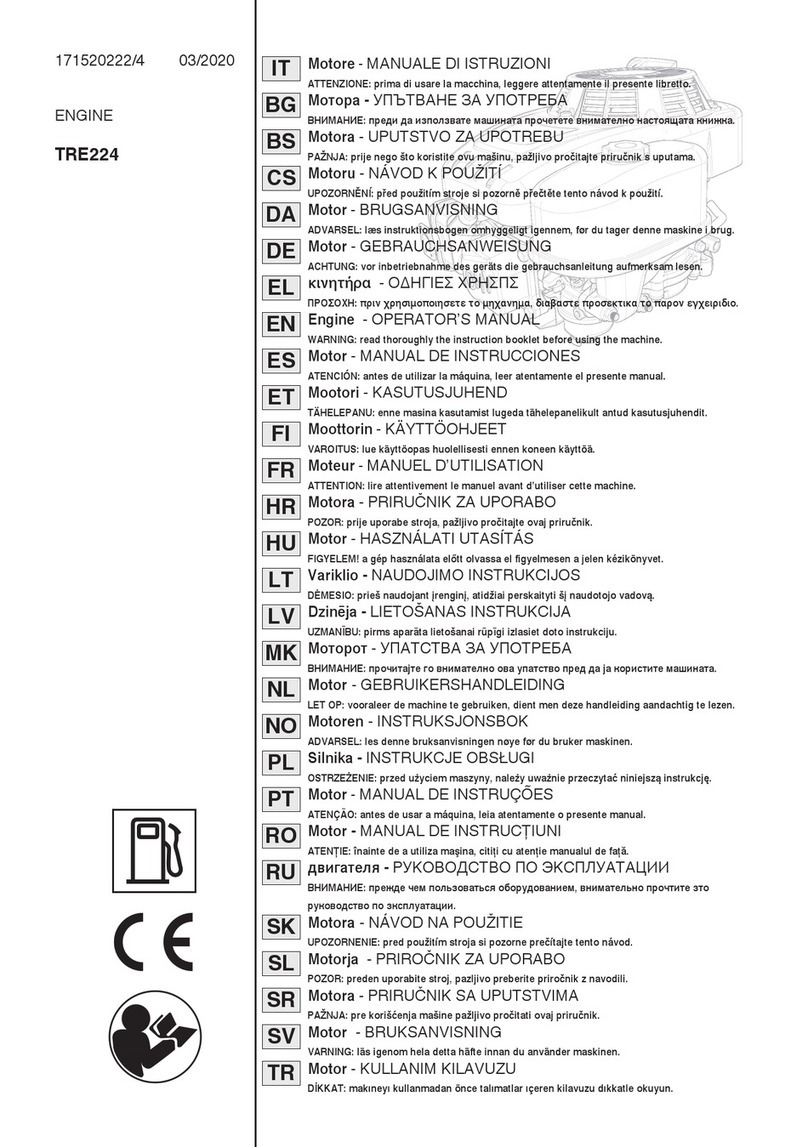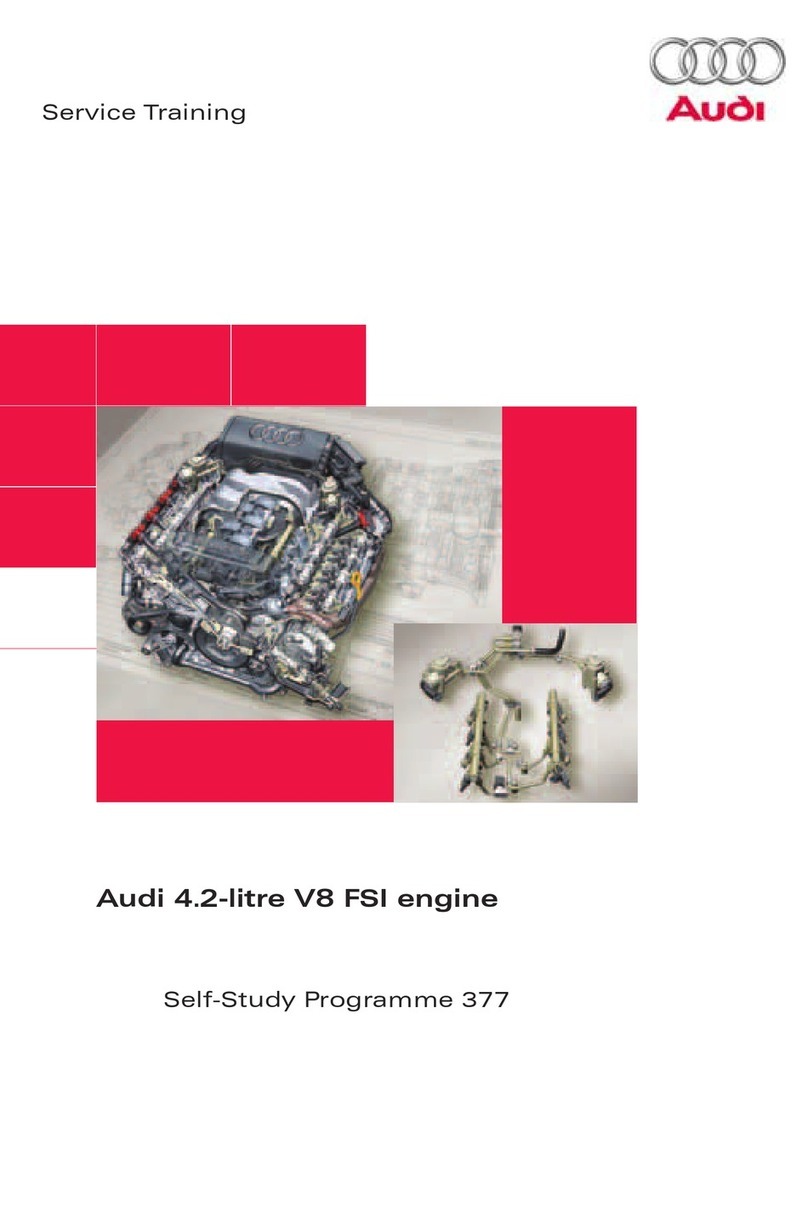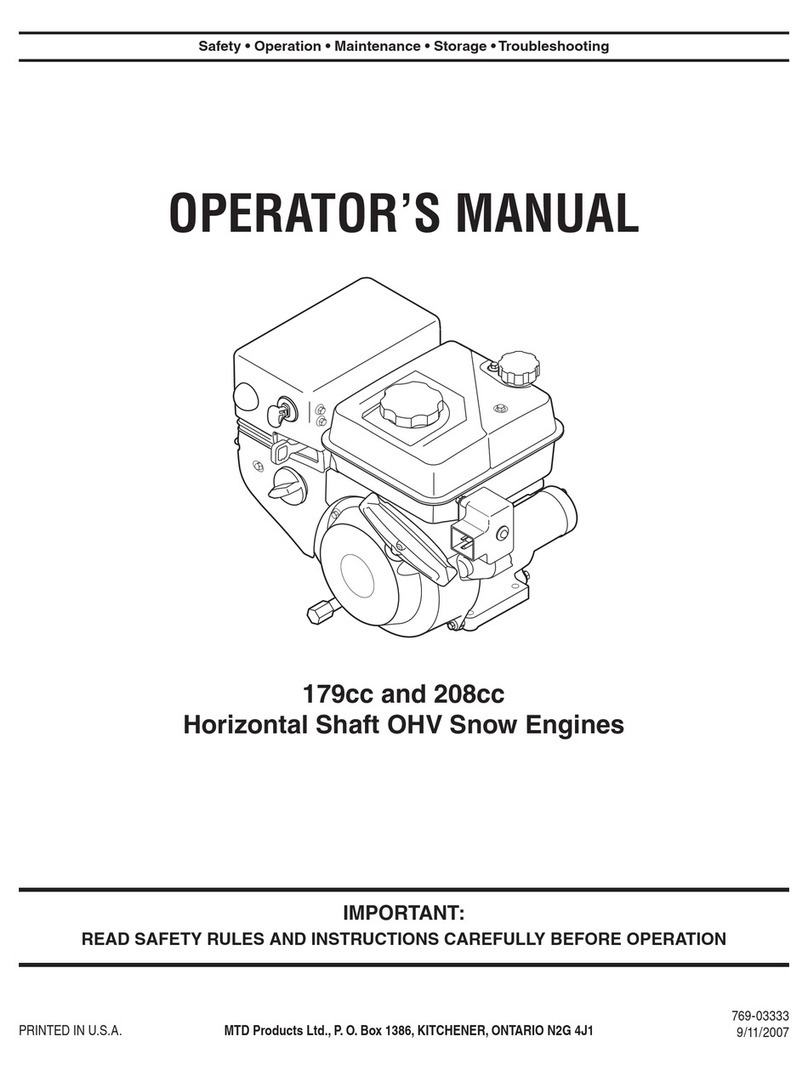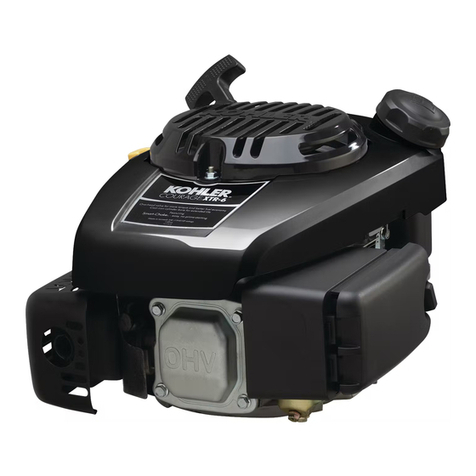CESARONI Pro75 User manual

Pro75® Instructions, July 2015 revision
Pro75® High-Power Reloadable Rocket Motor Systems
FOR USE ONLY Y CERTIFIED HIGH-POWER ROCKETRY USERS 18 YEARS OF AGE OR OLDER
FLAMMA LE MATERIAL – KEEP AWAY FROM OPEN FLAME, CIGARETTES OR OTHER HEAT SOURCES AT ALL TIMES
USE WITHIN 1 YEAR OF MANUFACTURING DATE TEMPERATURE RANGE: -5 to 30°C
Read this EFORE you start assembly:
•If you have any questions or require assistance, please contact your dealer. If you are unable to resolve your questions or
proble s then please contact the anufacturer directly. Assistance is available Mon – Fri. 9a – 4:30p at (905) 887-2370.
Ask for ProXX otor products technical support.
•Read all instructions carefully and be sure you fully understand each step before proceeding with otor asse bly.
•Make sure to also read the Pro75 Product Notes for reload specific instructions. Your reload may require bonding of grains
into the case liner. For moonburner reloads there are also separate moonburner instructions for gluing the grains.
•Inspect the co ponents of your reload kit carefully before you start asse bly. DO NOT use any parts that appear da aged or
faulty in any way.
•Do not ta per with or odify the hardware or reload kit co ponents in any way. Not only will this void all product warranty,
it could cause catastrophic failure of your otor syste and result in da age to your rocket vehicle, launch equip ent and
create a hazard to persons or property.
•Reload kit co ponents are designed for ONE USE ONLY, and ay not be reused. Reuse of any of these co ponents could
result in otor failure and will void product warranty.
•
Follow the safety code and all rules and regulations of your sport rocketry association. Also ensure that you are in co pliance
with all local, state/provincial, and Federal laws in all activities involving high power rockets and rocket otors.
•Parts checklist:

Pro75® Instructions, July 2015 revision
Pro75® hardware co ponents (if used): Reload kit co ponents:
Appropriate size of otor case
Forward closure
Nozzle holder
Threaded retaining rings (2)
Case liner (phenolic tube)
Nozzle
Forward insulator disk
P75-ORK (o-ring kit)
P75-TSI-KIT (s oke tracking grain/insulator & igniter kit)
Propellant grains (check reload kit package for nu ber and
type required for your otor)
Assembly instructions
•Be sure to follow the correct instructions for the brand of otor hardware you are using!
•Step 1 is the sa e for both brands of hardware.
•All o-rings are pre-lubricated at the factory where required.
•Three o-rings are supplied in the P75-ORK o-ring kits. The two larger o-rings are used with both Pro75® and
RMS™ hardware. The s aller o-ring is only used with Pro75® hardware.
•Do not apply lubricant to the grain spacer o-rings, they are for spacing only.
•Phenolic and phenolic/paper co ponents such as the nozzle and case liner tube are brittle and can be cracked,
broken or otherwise da aged by excessive force or i pact. Please be careful during handling and asse bly. If
you suspect a part has been da aged in any way, STOP and do not proceed with asse bly and especially firing
until inspected and replaced if necessary.
1. Forward Closure Assembly
1.1. Apply a light coating of o-ring lubricant or
grease to the inside of the cavity in the
forward closure. Insert the s oke tracking
charge insulator into this cavity and ensure it
is seated fully.
1.2. Apply a liberal layer of grease or o-ring
lubricant to one end of the s oke tracking
grain. Be sure the entire face is coated.
1.3. Insert the s oke tracking grain into the
s oke tracking charge insulator, coated end
first. Push the grain in with sufficient force to
fully seat it and spread the lubricant as
shown. The excess lubricant will help prevent
gas leakage forward as well as protecting the
forward closure fro heat and co bustion
products fro the s oke tracking charge.
Smoke
Tracking
Grain
Step 1.2 Step 1.3
Step 1.1
Tracking
Charge
Insulator
Forward
Closure
Lubricant Grease
You may now proceed to the remainder of the instructions for your brand of motor hardware.
Step 2 is for Pro75
®
hardware users.

Pro75® Instructions, July 2015 revision
Step 3 is for RMS™ hardware users.
2. Motor Assembly: Pro75
®
Hardware.
efore proceeding, inspect the external o-ring grooves on the forward closure and nozzle holder, as
well as the internal groove on the nozzle holder. Clean thoroughly if necessary to remove ALL
combustion residue and debris. Also ensure that the inside of the motor case has been thoroughly
cleaned.
2.1. Check both ends of the phenolic case liner to ensure that
the inside ends have been cha fered or deburred. If
not, use a hobby knife or coarse sandpaper to re ove
the sharp inner edge to allow co ponents to be inserted
easily.
2.2. Fit the nozzle to one end of the paper/phenolic case liner tube.
It ay be a snug fit. Push it carefully but with sufficient force to
seat the shoulder on the nozzle all the way into the insulator
tube.
2.3. Locate the s aller o-ring in the P75-ORK o-ring kit. Fit the o-ring
to the internal groove of the nozzle holder. Push the nozzle
holder over the nozzle until fully seated. Apply additional
lubricant to the nozzle exit section if necessary to facilitate
asse bly.
2.4. For steps 2.5 – 2.6 work with the nozzle/case liner asse bly and
otor case horizontally on your work surface.
2.5.
Ins
ert one propellant grain into the forward end of the
case liner and push it a short way into the tube. Fit one
grain spacer o-ring to the top face of the grain,
ensuring it sits flat on the end of the grain. Insert the
second grain, push it in a short ways, then add another
grain spacer, and so on until you have loaded all
propellant grains into the case liner.
2.5.1. There should be sufficient space after the last grain is inserted to fit the last spacer in
place so that it is flush or extends only slightly fro the end of the tube. If it extends
out by ore than 1/3 of its own thickness, re ove it and do not use. Only this spacer
ay be o itted and only if necessary to fit.
2.6. Carefully install the two larger o-rings into the
external grooves of the nozzle holder and forward
closure. Handle these co ponents with care fro
this point on so as not to da age or conta inate
the o-rings.
2.7. Place the case liner/nozzle asse bly on your work
surface with the nozzle end down, and slide the
otor case down rear end first (end with thrust
ring) over the top of the liner towards the nozzle. Note: a light coat of grease on the liner
exterior will aid asse bly, disasse bly and cleanup!
2.8. Lay the otor case asse bly down horizontally, and push on the nozzle ring until the
asse bly is far enough inside the case that the threads are partly exposed and the screw
ring can be threaded into the rear of the case. Don’t push on the nozzle itself as you will
push it out of the nozzle holder.
2.9. Screw in the nozzle retaining ring using the supplied wrench, pushing the nozzle/nozzle
ring/case liner asse bly forward as you proceed. Screw it in only until the retaining ring is
Step 2.7
Pro75
R
Motor
Case
Nozzle Phenolic Case
Liner
Step 2.1 & 2.2
O-ring in
internal groove
Nozzle
Holder
Step 2.3
Grain Grain Spacer
Step 2.5
Step 2.6
O-ring in
external groove

Pro75® Instructions, July 2015 revision
exactly even with the end of the motor case - do not thread it in as far as it will go. Then, back the retaining
ring out one half of a turn.
2.10. Fit the forward insulating disk to the top of the case liner, checking that the top grain spacer (if used) is still
properly in place.
2.11. Verify that the inside of the otor case is clean ahead of the liner asse bly before proceeding. Wipe with a clean rag, tissue or wet-wipe
if required. Apply a light coat of silicone o-ring lubricant onto this area after cleaning.
2.12. Insert the asse bled forward closure into the top of the otor case, pushing it down carefully with your fingers until you can thread in
the retaining ring. Thread in the forward retaining ring using the wrench, until you feel it take up a load against the top of the case liner.
At this point the ring should be approxi ately flush with the end of the otor case, or slightly sub erged. If it extends out the case at
this point by ore than about one half a turn, check the nozzle end to ake sure the ring is not screwed in too far forward. If so,
unscrew the nozzle retaining ring another half turn and screw the forward closure retainer in further.
NOTE: it is best to have the forward closure retaining ring flush or slightly sub erged and the nozzle retaining ring protruding by a half turn or
so, than vice versa. There is ore tolerance for o-ring location at the nozzle end. There will always be so e inor variation in the length of
internal co ponents due to anufacturing tolerances.
2.13. Skip ahead to Section 4, Preflight preparation.
3. Motor Assembly, RMS™ Hardware.
3.1. Check both ends of the phenolic case liner to ensure that
the inside ends have been cha fered or deburred. If not,
use a hobby knife or coarse sandpaper to re ove the
sharp inner edge to allow co ponents to be inserted
easily.
3.2. Fit the nozzle to one end of the paper/phenolic case liner
tube. It ay be a snug fit. Push it carefully but with
sufficient force to seat the shoulder on the nozzle all the
way into the insulator tube.
3.3. For steps 3.4 – 3.8 work with the nozzle/case liner asse bly and otor case horizontally on your work surface.
Pro75
R
CLOCKWISE
Nozzle
Retaining
Ring
Wrench
Step 2.9
Pro75 Insulating
Disk Pro98 Insulating
Disk
Step 2.10
Lubricant Grease
Forward
Retaining
Ring
CLOCKWISE
Wrench
Step 2.11 & 2.12
Nozzle Phenolic Case
Liner
Step 3.2

Pro75® Instructions, July 2015 revision
3.4. Insert one propellant grain into the forward end of the
case liner and push it a short way into the tube. Fit one
grain spacer o-ring to the top face of the grain, ensuring
it sits flat on the end of the grain. Insert the second
grain, push it in a short ways, then add another grain
spacer, and so on until you have loaded all propellant
grains into the case liner.
3.4.1. There should be sufficient space after the last
grain is inserted to fit the last spacer in place so
that it is flush or extends only slightly fro the end
of the tube. If it extends out by ore than 1/3 of
its own thickness, re ove it and do not use. Only
this spacer ay be o itted and only if necessary
to fit.
3.5. Slide the co pleted liner/nozzle/grain asse bly into the
otor case until the nozzle protrudes about 1/8” fro
the end of the case. Note: a light coat of grease on the
liner exterior will aid asse bly, disasse bly and
cleanup!
3.6. Fit the forward insulating disk to the top of the case liner, checking that the top
grain spacer (if used) is still properly in place.
3.7. Place one of the larger pre-lubricated o-rings fro the P75-ORK kit into the
forward end of the case until it is seated against the forward insulator.
3.8. Thread the co pleted forward closure into the forward end of the otor case by
hand until it is seated against the case. NOTE: There will
be considerable resistance to threading in the closure in
the last 1/8” to 3/16” of travel, due to co pression of
the o-ring.
3.9. Hold the otor vertically on your work surface with the
forward closure downwards, and push down on the
nozzle to ensure the liner/nozzle asse bly is seated
fully forward.
3.10. Place the other identical o-ring into the groove in the nozzle.
3.11. Thread the aft closure into the otor case until it is seated. It is nor al for a s all gap (up to about
1/16”) to re ain between the closure and the end of the case, due to anufacturing tolerances on
internal co ponents. Note: There will be considerable resistance to threading in the closure in the
last 1/8” to 3/16” of travel, due to co pression of the o-ring.
3.12. Proceed to Section 4, Preflight preparation.
Step 3.4
Grain
Spacer
Grain
Motor
Case
Step 3.5
1 8" (75mm)
1" (98mm)
Step 3.6
75mm Insulating
Disk 98mm Insulating
Disk
Buna o-ring
(Step 3.10)
Step 3.10 & 3.11
MAX
1 16"
Gap
Step 3.7 & 3.8
Buna o-ring
(Step 3.7)

Pro75® Instructions, July 2015 revision
4.
Preflight Preparation.
4.1. Prepare the rocket’s recovery syste , before otor installation if possible.
4.2. Install the otor in your rocket, ensuring that it is securely ounted with a positive eans of retention to prevent it fro being ejected
during any phase of the rocket’s flight.
4.3. IMPORTANT: DO NOT INSTALL THE IGNITER IN THE MOTOR UNTIL YOU HAVE THE ROCKET ON THE LAUNCH PAD, OR IN A SAFE AREA
DESIGNATED Y THE RANGE SAFETY OFFICER. Follow all rules and regulations of your rocketry association, and/or the National Fire
Protection Association (NFPA) Code 1127 where applicable.
4.4. Install the supplied igniter, ensuring that it travels forward until it is in contact with the forward closure. Securely retain the igniter to the
otor nozzle with tape, or (if supplied) the plastic cap, routing the wires through one of the vent holes. Ensure that whatever eans you
use provides a vent for igniter gases to prevent pre ature igniter ejection.
4.5. Launch the rocket in accordance with all Federal, State/Provincial, and unicipal laws as well as the Safety Code of your rocketry
association, as well as NFPA Code 1127 where applicable.
5. Post Flight Cleanup.
Do not try to dis ount or disasse ble your otor until it has thoroughly cooled down after firing. So e co ponents such as the nozzle ay
be extre ely hot for so e ti e after firing.
Perfor otor cleanup as soon as possible after firing, however, as co bustion residues are corrosive to otor co ponents, and beco e
very difficult to re ove after several hours.
5.1. Unthread and re ove the forward and rear closures. Re ove the nozzle holder fro the nozzle.
5.2. Re ove the phenolic tracking s oke charge insulator fro the forward closure.
5.3. Re ove all o-rings.
5.4. Discard all reload kit co ponents with regular household waste, after they have co pletely cooled down.
5.5. Use wet wipes, or paper towels or rags da pened with water or vinegar to thoroughly clean all residue, grease etc. off all hardware
co ponents. Pay close attention to internal and external o-ring grooves. A cotton swab or s all stick of balsa is an excellent tool for
cleaning these grooves.
5.6. Apply a light coat of grease or o-ring lubricant to all threaded sections and reasse ble threaded co ponents for storage.
MEANS OF DISPOSAL: The propellant grains, s oke tracking charge, and the igniter are extre ely fla able and burn with an intense, hot fla e.
The re ainder of the co ponents are inert and ay be disposed of with household trash. To destroy the fla able co ponents, dig a shallow
hole in the ground in a re ote area, away fro any buildings, trees, people, or any other co bustibles. Place the propellant grains and s oke
tracking odule in the hole. Install the igniter into the core of one of the propellant grains and secure with tape. Ignite electrically fro a ini u
distance of 15 eters. Douse any s oldering paper residue and discard. Ensure that you are not in violation of any local or state regulations for this
procedure. If in doubt, contact your local fire depart ent. Please direct any questions regarding safe disposal to our technical support nu ber on
page one of this docu ent.
First Aid: If ingested, induce vo iting. Burns fro fla es are to be treated as regular burns with nor al first aid procedures. In either case,
seek edical attention.
Cesaroni Technology Incorporated (“CTI”) certifies that it has exercised reasonable care in the design and anufacture of its products. We do not assu e any
responsibility for product storage, transportation or usage. CTI shall not be held responsible for any personal injury or property da age resulting fro the
i proper handling, storage or use of their products. The buyer assu es all risks and liabilities and accepts and uses CTI products on these conditions. No
warranty either expressed or i plied is ade regarding Pro75
®
products, except for replace ent or repair, at CTI’s option, of those products which are proven
to be defective in anufacture within one (1) year fro the date of original purchase. For repair or replace ent under this warranty, please contact your point
of purchase. Proof of purchase will be required. Your province or state ay provide additional rights not covered by this warranty.
⇒ Check out our web site at http://www.Pro-X.ca for tech tips, FAQ’s, user feedback and photos, or e- ail us at [email protected]
⇒ For technical and warranty inquiries, please contact your Pro75
®
dealer.
Pro75
®
is a registered trade ark of Cesaroni Technology Incorporated. Patent # US06079202. Other patents pending. Made in Canada.
This manual suits for next models
1
Table of contents
Popular Engine manuals by other brands

MTU
MTU 20 V 4000 G83 operating instructions

Kubota
Kubota D1503-M Workshop manual
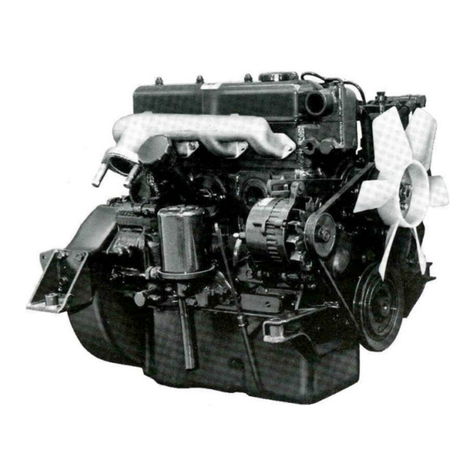
Mitsubishi
Mitsubishi 4DQ50 Service manual
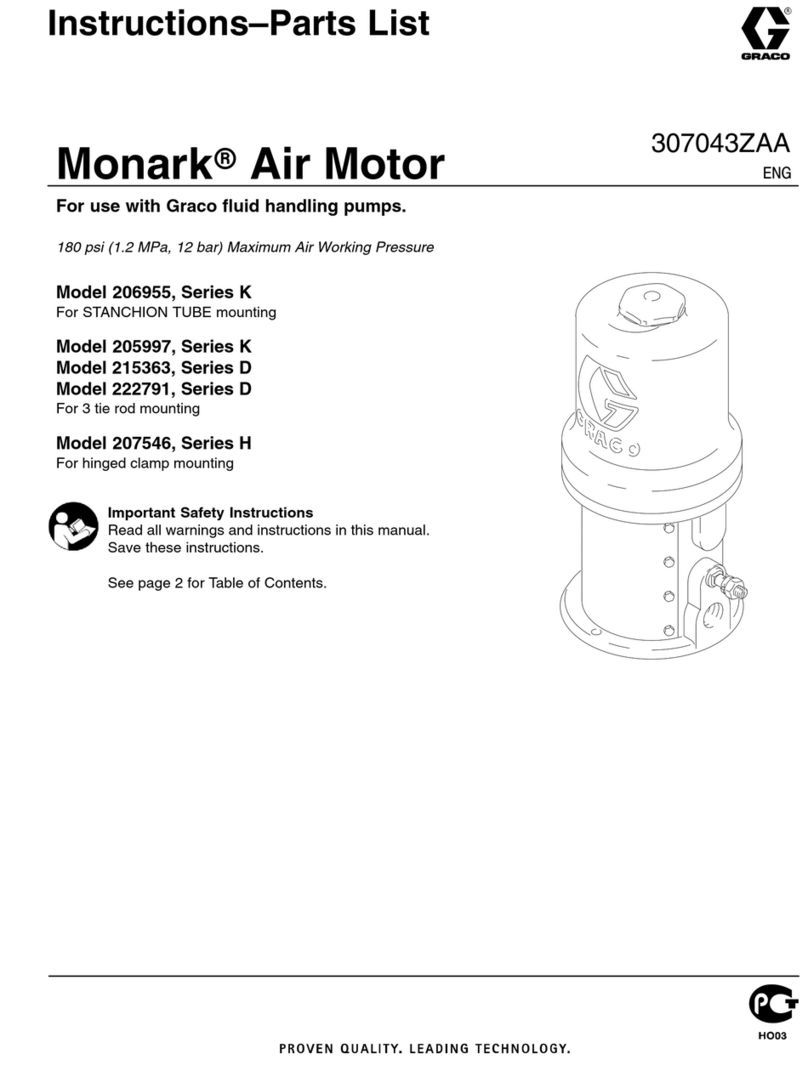
Graco
Graco Monark K Series instructions
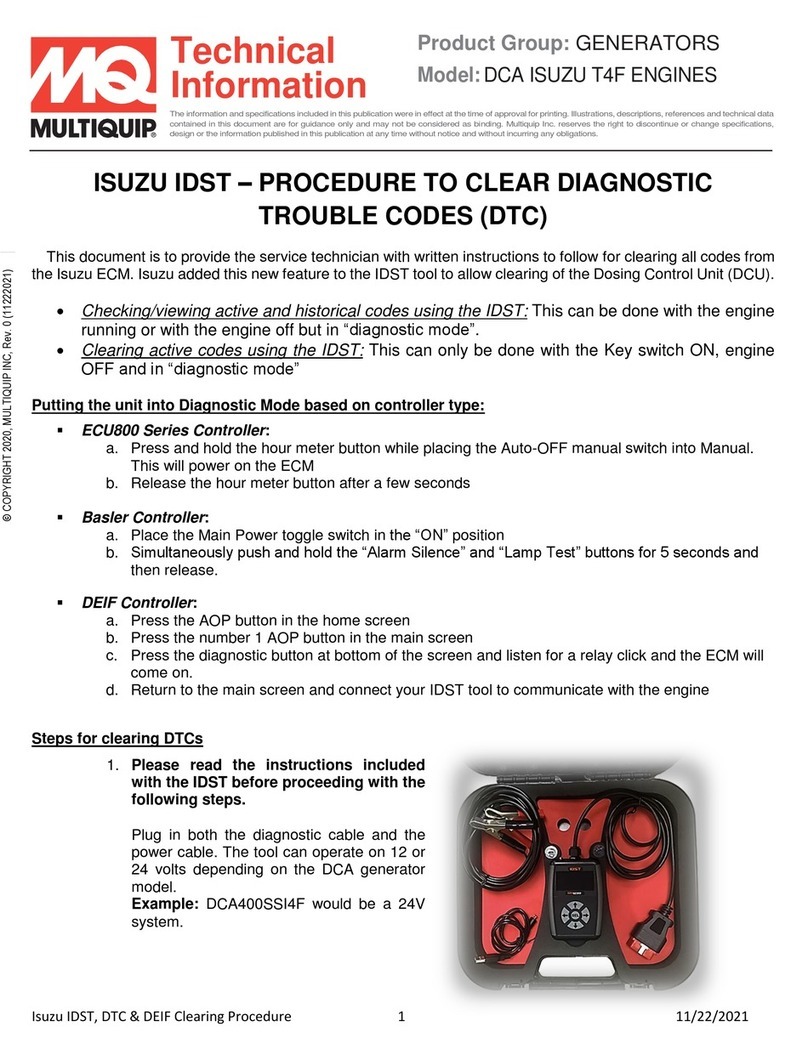
MULTIQUIP
MULTIQUIP DCA ISUZU T4F technical information

Briggs & Stratton
Briggs & Stratton Vanguard 290000 Operating & maintenance instructions

